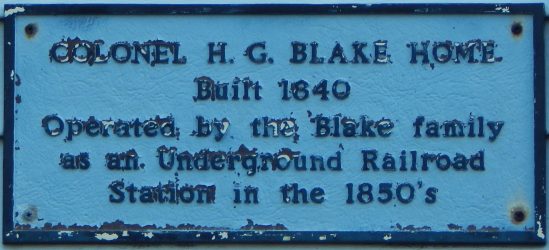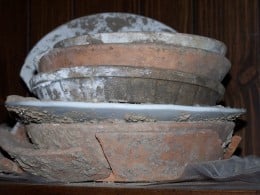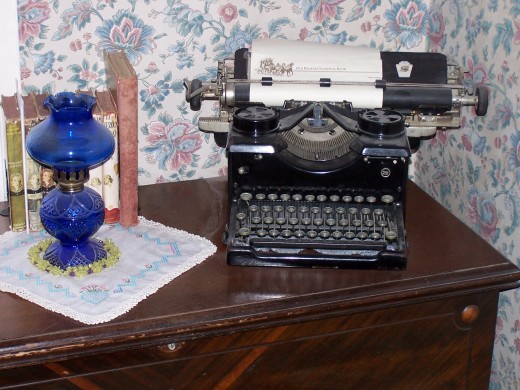Col. H.G. Blake, once an editor of the Medina County Gazette newspaper in the 1800s, would probably find this question surprising. Even though his world was much different than ours, newspapers today still play the same role that they did then.
In the early 1970s, my family moved to a small Oklahoma town (population 1,500, if the neighbor’s new baby and the chickens were included). It was a town strong in faith and handshake agreements, where a person was only as good as his or her word. There was not a place in town a kid could go where it wasn’t known to whom he or she was related.
However, there was no newspaper. The closest newspaper was 30 miles away, in Claremore, Oklahoma, and its coverage of our little town was spotty at best. The only regular “news” coverage was what the local gossips shared.
If there was an issue with the city council, there was no one to turn to for help, no reporter to question officials. If the chief of police decided to wield his power a little less than justly, there was no one to report the story so the community could take action, and no one would take action in a case of one person’s word against another’s.
There was no one to champion someone who didn’t have the right connections, to watch that rules and laws were followed and applied evenly and justly, and to ensure the townspeople would have a chance to be educated about decisions by elected officials.
Without the watchful eye of a paper, the city council meetings were a group of old men gathered around a little table mumbling to each other. Resolutions were passed, actions taken, but no one else attending the meeting could hear anything and no one knew when a council meeting would even be held. Those who objected were ignored and labeled troublemakers.
That was changed when my mother and aunt started a newspaper named it the Inola Independent. There was a strategic decision made that my aunt would cover city council meetings. She was well respected, and everyone in town knew she was deaf in one ear, which meant she constantly had to ask council members to repeat everything they said.
It became onerous for them to keep repeating, and they tried ignoring her, which didn’t work too well, she was a rather commanding person and difficult to ignore. She also was more stubborn than any mule any of them had ever encountered.
When it was reported in the paper that they had discussed something and voted on it but refused to say what it was or to answer questions, it also became somewhat embarrassing for the council members. Townspeople started questioning what was being kept secret in our friendly little town.
The efforts of the paper meant that, for the first time, the public actually knew what was happening in their own city government. Election time came and a few of the council members lost their seats.
During the same time, the dog pound was putting animals to sleep by putting them in a 55-gallon drum, with sometimes more than one animal at a time in the drum, hooking a hose from the drum to a truck’s tailpipe and while the animal died in terror inside the drum, the good ole boys revved the engine and laughed. But few in our town knew of this.
Until our paper reported it.
The barrel was destroyed and animals were put to sleep gently and humanely, and only those who were too ill or vicious to be found a home were euthanized.
There were many in town who were thrilled to have a weekly paper, finally a source for not only hard news but one for high school sports teams, engagements, births, weddings, and general about-town happenings.
On the other hand, there were many who were less than thrilled with the paper. The city council members and the police chief to name just a few.
We would soon learn that there was a darker, deeper opposition to the newspaper’s coverage.
One night, as my mother worked alone in the newspaper office, in this trusting town where doors were not locked (we didn’t even have a key to our farmhouse, few people ever locked their doors and the farmhouse key had been lost long before we ever moved in), we learned for the first time how dangerous was the road we were walking.
As my mother worked late at night putting the finishing touches on the paper, the head of the local KKK visited her.
He explained to her that the newspaper needed to cover only “approved” news, that the KKK was not appreciating many of the stories we were running and we were to immediately cease. He mentioned that her daughters were young and at the farm alone, that here she was alone, no telling what could happen in the darkness of night.
Since he also was the police chief and it was rumored that he liked to terrify others by holding his revolver to their heads and pull the trigger and when there was no bullet fired declare that he guessed they would live that day, there was no doubt how much of a threat had been made.
At that time, even though my sister and I worked many hours at the paper, we often were alone out at the farm while my mother and aunt would be in town at the paper office, two-and-a-half miles away.
A family meeting was immediately held. My mother and aunt explained to my sister and me what had happened, the threat that had been made, the danger that existed, and exactly who had made the threat.
They told us that the four of us are made of stronger stuff and that sometimes it takes a lot of courage to do the right thing. They asked my sister and me if our family should stop printing the paper or keep on despite the threat. Without hesitation, the two of us said to continue the paper.
We were told if we noticed anything odd at the farm, anyone on the property or any cars coming up the long driveway, we were to call the newspaper office right away.
My aunt checked that her rifle was in good working order and there was plenty of ammo. My sister and I were told it was in case there was any trouble with coyotes or foxes attacking the farm animals. We didn’t say anything because it felt better to pretend that was the reason, but we knew the truth.
Soon, at the top of our proud little paper’s front page appeared an ostrich with its head stuck in the sand and the words, “Facts ignored are not problems solved,” and we continued our news coverage as we had before the threat.
We never did know why the threat was never carried out, if it was because my mother was a well-known and respected teacher in the high school and my aunt had built friendships and respect with some of the longtime residents; if there was a fear that what would be done to us would not be easy to cover up and perhaps bring unwelcome attention; or because the KKK members were not in total agreement what to do about us, especially since many of them had kids whose teacher was my mother. Whatever the reason, we continued to cover the news and to help the community in every way we could.
Because of the stories we published, we brought about change. Our community became stronger.
I share these stories because I have seen a community without a newspaper, and I have seen the difference a newspaper can make. Newspapers are the guardians of democracy and freedom. They are the first attacked when there is an attempt being made to control a people.
In a time when the media is being labeled an enemy of the American people and is being selectively banned from high level press briefings, the question as to whether newspapers have significance answers itself. After all, if newspapers did not still have significance, were not seen as a threat by those who seek power, they would not be mentioned at all.
A newspaper helps to make a community stronger, and a stronger community equals stronger businesses.
To share this or to leave a comment, please click on the title at the top of this post. Thank you!
Copyright 2017 A. Barnes | All Rights Reserved.



